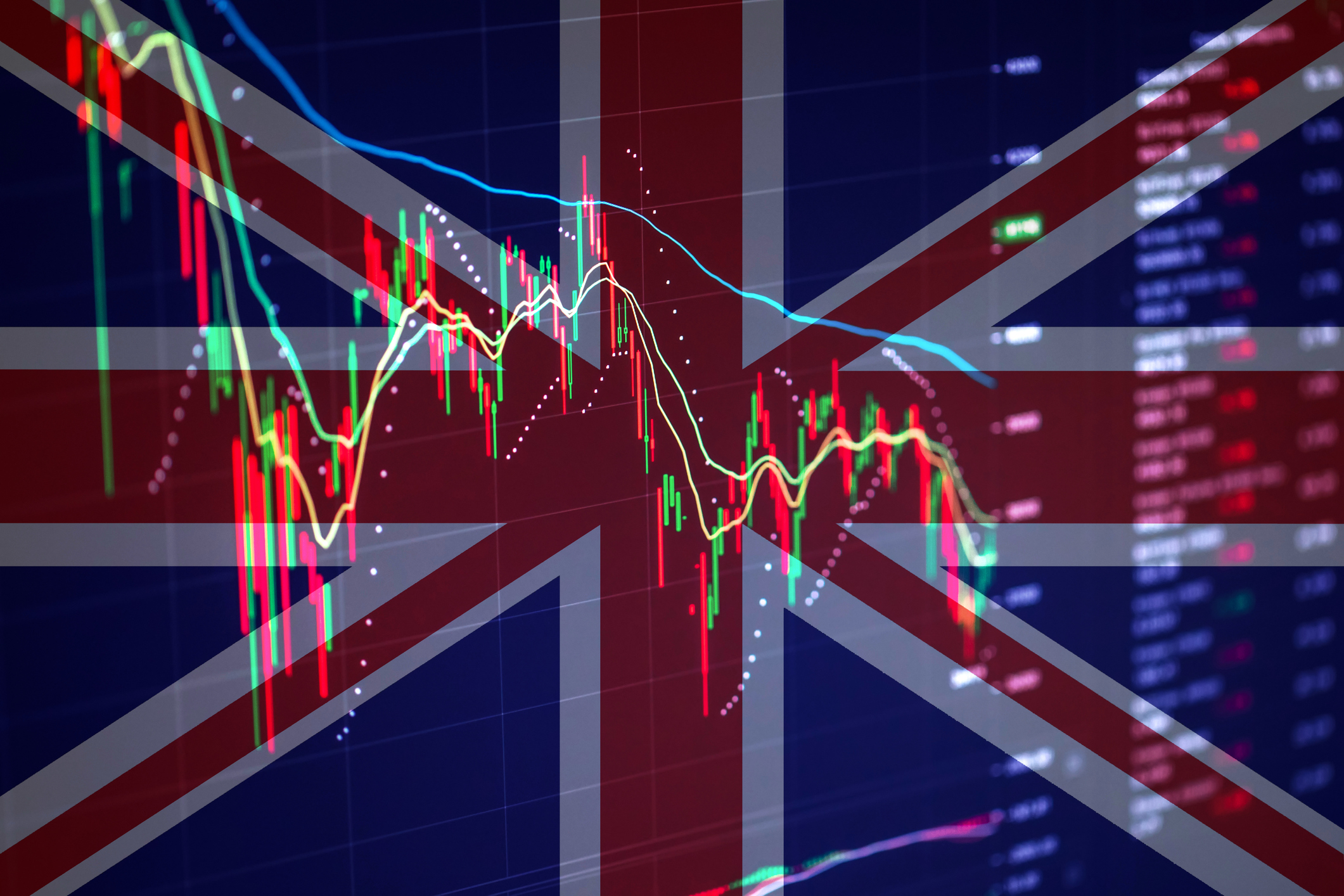The charts that matter: corona-panic takes hold
As the coronavirus spreads around the world, John Stepek looks at how it may have affected the charts that matter most to the global economy.

Before I get started on our roundup this week, can I ask you to do me a favour? I’m keen to get feedback on what you think of MoneyWeek in general – from the magazine to the website to our daily email (which is of course, marvellous) – and so we’ve put together a survey to pick your brains.
It’ll help us to understand where we’re meeting your needs and where we need to improve and what we should be focusing on more. So I’d really appreciate it if you could take ten minutes to fill in the survey – you’ll be entered into a prize draw of some sort (full details are on the survey) but the real prize is that you’ll help me and Merryn and the team to shape the future of MoneyWeek. Tell us exactly what you think of us!
On the podcast front, I was back with The Week Unwrapped team in what was a very interesting conversation about using hallucinogenics to boost your effectiveness at work (who knew that a lack of mind-altering drugs was at the heart of the productivity conundrum?), and a look at the race for the Antarctic, which seems to be heating up once again. Meanwhile, I brought along the topic of local currencies – what are they, and are they any use?
MoneyWeek
Subscribe to MoneyWeek today and get your first six magazine issues absolutely FREE

Sign up to Money Morning
Don't miss the latest investment and personal finances news, market analysis, plus money-saving tips with our free twice-daily newsletter
Don't miss the latest investment and personal finances news, market analysis, plus money-saving tips with our free twice-daily newsletter
If you’re looking for some quality reading material on investment, then you can still get The Sceptical Investor (my book on contrarian investing), at 40% off. Just pick it up here and type in the code SCEPTIC40 when you come to pay. Or get it free on audio book if you join Audible at the same time.
Oh and another book that I think you’ll all be interested in is The Investment Trusts Handbook 2020, edited by the excellent Jonathan Davis. I don’t normally plug non-MoneyWeek-related things in this email but right now you can get a free ebook version simply by signing up to the email list of Harriman House (who published my book). That strikes me as a good deal.
Anyway, here are the links for this week’s editions of Money Morning.
- Monday: The coronavirus is scary – but it’s irrelevant to your investments
- Tuesday: How long before financial markets stop fearing the coronavirus?
- Wednesday: Will the coronavirus derail the bull market? Here’s what history suggests
- Thursday: It’s still “inflation or bust” as far as the Fed is concerned
- Friday: As Britain leaves the EU, what lies ahead for the pound?
- Subscribe: Get your first 12 issues of MoneyWeek for £12
We also wrote about UK house prices this week (bad news, they seem to perking up), the Bank of England’s decision to hold interest rates, and Neil Woodford investors finally getting some of their money back.
The charts that matter
As the week comes to an end, it’s pretty clear that the market is starting to panic about coronavirus. I’m reading ever more worried-looking Tweets, we’ve got an Economist magazine cover on the subject (I discussed the relevance of that here), and the charts are showing that anything China-related is being hit hard.
Firstly, the yield curve is getting close to inverting again. One of the much-watched ones (the gap between the yield on the ten-year US government bond and that on the three month) has already inverted. But the most important one – the gap between the yield on the ten-year and the two-year is getting close too.
At the end of the day, this doesn’t mean much, because the recession warning already triggered when the yield curve first inverted last year. But it does show that investors are getting worried that growth in the future will be weaker than growth today. That means they don’t feel like backing the “reflation” trade.
Of course, if coronavirus leads to more money printing by the Chinese and American central banks, then they might change their minds. But let’s see what happens.

(The gap between the yield on the ten-year US Treasury and that on the two-year: three months)
It’s been another good week for gold (measured in dollar terms). Gold is seen as a “safe haven”; it’s seen as a way to hedge against geopolitical turmoil and panic; and it tends to do well when interest rates fall (as bond yields have done this week). So it’s no wonder it’s gone up even in the face of a solid dollar.

(Gold: three months)
The US dollar index – a measure of the strength of the dollar against a basket of the currencies of its major trading partners – was a bit stronger this week but was held back somewhat by a dovish Federal Reserve. That’s quite interesting given that this is an environment you’d typically expect to generate a lot of demand for the dollar.

(DXY: three months)
Official trading in the Chinese yuan (or renminbi) has been suspended for the Chinese New Year. However, you have to expect that the yuan will weaken when trading re-opens. Trading in offshore markets saw the yuan weaken to near the seven mark (once seen as a ‘line in the sand’, though not so much now).

(Chinese yuan to the US dollar: since 25 Jun 2019)
The ten-year yield on the US government bond fell. It’s partly the dovish Fed, and partly the “risk-off” mood inspired by the coronavirus.

(Ten-year US Treasury yield: three months)
The yield on the Japanese ten-year bond slipped a little further into negative territory.

(Ten-year Japanese government bond yield: three months)
And the yield on the ten-year German bund fell hard, because bad news for China is bad news for Germany.

(Ten-year Bund yield: three months)
Copper fell for the same reason – bad news for the Chinese economy is bad news for Dr Copper (whose price is seen as a good indicator of prospects for global growth).

(Copper: six months)
The Aussie dollar also showed clearly the concerns over China.

(Aussie dollar vs US dollar exchange rate: three months)
Cryptocurrency bitcoin rallied this week. I’m not sure if that’s a coronavirus reaction – bitcoin does appear to do well when situations arise where people might want to get their money across border in a way that circumvents official channels.

(Bitcoin: ten days)
US weekly jobless claims fell last week, but only because claims for the previous week were revised sharply higher. So this week, claims came in at 216,000. The week before was revised up to 223,000 from a previous estimate of 211,000. As a result, the four-week moving average now sits at 214,500.
When the four-week moving average troughs, the market often tops soon after. Have we seen the trough yet? Still can’t be sure.

(US jobless claims, four-week moving average: since January 2016)
The oil price (as measured by Brent crude, the international/European benchmark) also took a hit from fears over China hitting global growth.

(Brent crude oil: three months)
Internet giant Amazon reported forecast-beating results at the end of the week. The impact isn’t visible in the chart below, but it sent the company’s share price soaring.

(Amazon: three months)
Electric car group Tesla meanwhile appears to be immune to any concerns over China even although the company has had to suspend production at its Shanghai factory, which could result in delays to Model 3 production.

(Tesla: three months)
Get the latest financial news, insights and expert analysis from our award-winning MoneyWeek team, to help you understand what really matters when it comes to your finances.
John Stepek is a senior reporter at Bloomberg News and a former editor of MoneyWeek magazine. He graduated from Strathclyde University with a degree in psychology in 1996 and has always been fascinated by the gap between the way the market works in theory and the way it works in practice, and by how our deep-rooted instincts work against our best interests as investors.
He started out in journalism by writing articles about the specific business challenges facing family firms. In 2003, he took a job on the finance desk of Teletext, where he spent two years covering the markets and breaking financial news.
His work has been published in Families in Business, Shares magazine, Spear's Magazine, The Sunday Times, and The Spectator among others. He has also appeared as an expert commentator on BBC Radio 4's Today programme, BBC Radio Scotland, Newsnight, Daily Politics and Bloomberg. His first book, on contrarian investing, The Sceptical Investor, was released in March 2019. You can follow John on Twitter at @john_stepek.
-
 UK wages grow at a record pace
UK wages grow at a record paceThe latest UK wages data will add pressure on the BoE to push interest rates even higher.
-
 Trapped in a time of zombie government
Trapped in a time of zombie governmentIt’s not just companies that are eking out an existence, says Max King. The state is in the twilight zone too.
-
 America is in deep denial over debt
America is in deep denial over debtThe downgrade in America’s credit rating was much criticised by the US government, says Alex Rankine. But was it a long time coming?
-
 UK economy avoids stagnation with surprise growth
UK economy avoids stagnation with surprise growthGross domestic product increased by 0.2% in the second quarter and by 0.5% in June
-
 Bank of England raises interest rates to 5.25%
Bank of England raises interest rates to 5.25%The Bank has hiked rates from 5% to 5.25%, marking the 14th increase in a row. We explain what it means for savers and homeowners - and whether more rate rises are on the horizon
-
 UK inflation remains at 8.7% ‒ what it means for your money
UK inflation remains at 8.7% ‒ what it means for your moneyInflation was unmoved at 8.7% in the 12 months to May. What does this ‘sticky’ rate of inflation mean for your money?
-
 Would a food price cap actually work?
Would a food price cap actually work?Analysis The government is discussing plans to cap the prices of essentials. But could this intervention do more harm than good?
-
 Is my pay keeping up with inflation?
Is my pay keeping up with inflation?Analysis High inflation means take home pay is being eroded in real terms. An online calculator reveals the pay rise you need to match the rising cost of living - and how much worse off you are without it.


